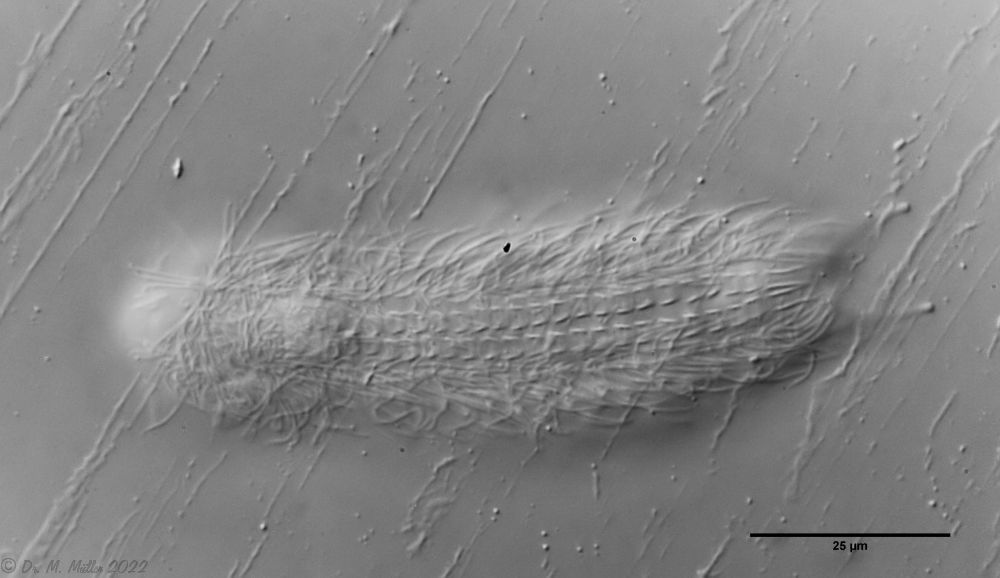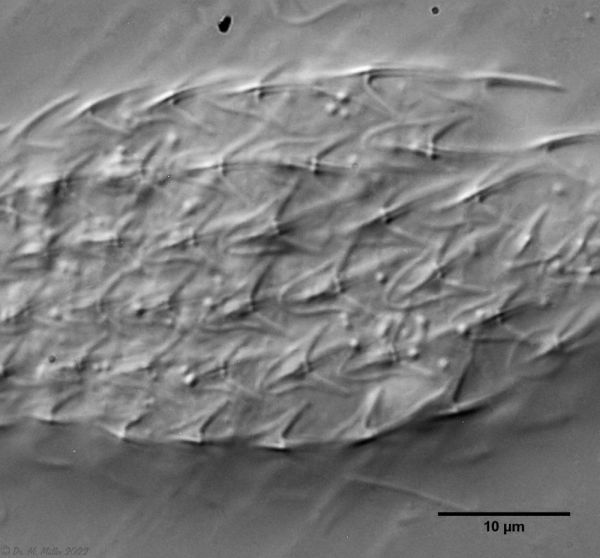Chaetonotus (H. ) italicus

91 µm - 110 µm
Width:
- 25 µm
Width of the head ( five-lobed ):
18 µm
- 13 µm
Length of the furca:
11 µm - 17 µm
Adhessive tubes:
Pharyx ( cylindrical ):
27 µm - 29 µm
Diameter of the mouth ( round ):
unknown
Dorsal scales:
13 rows of 13-14 three-lobed scales (6.5µm x 5µm) with simple spine (3µm - 10µm); typical scale group for Hystricochaetonotus without spines at the posterior end
Ventral scales:
ventral intermediate field with two rows of 20 rectangular scales each (1.2µm - 4µm); two keeled terminal plates (length 6.4µm - 6.8µm)
Oecology:
Moor
Similar species:
all Hystricochaetonotus; precise diagnosis required
Particularities:
Spines without secondary tip; unique scaling of the ventral intermediate field
The small gastrotrich Chaetonotus (H.) italicus, previously only known from Italy, is relatively common in the Sima bog.

Ch. italicus: dorsal
Many of the specimens found were in their post-parthenogenetic (hermaphroditic) phase and bore both a distinct, bipartite X-organ and rod-shaped spermatoids. The pronounced dumbbell-shaped pharynx is typical of the species:

Ch. italicus: t.s.
The ventral intermediate field is covered with two rows of rectangular scale plates, which become more indistinct in the neck area. Two keeled terminal plates form the end:

Ch. italicus: ventral
Although the scale spines do not have a secondary tip, the classification in the subgenus Hystricochaetonotus is clear due to the typical scale shape:

Ch. italicus: scale form